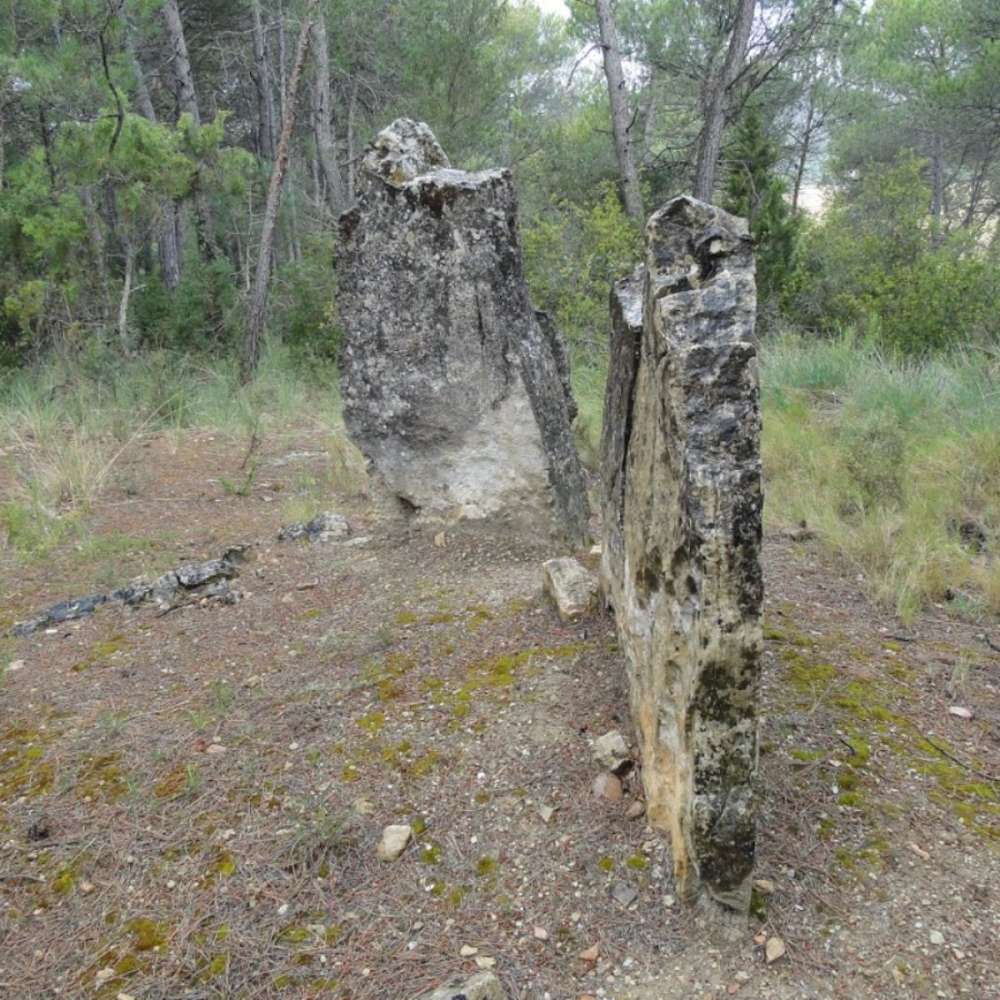Dolmens or Megalithic Tombs
Dolmens are collective tombs made out of large rocks covered by a tumulus and designed to be used for several burials.
For archaeology enthusiasts, we propose a route around Anoia that takes in four of the area’s megalithic tombs. It is interesting to see how a primitive society was able to build megalithic tombs out of of enormous stone slabs, particularly the one used as a roof.
A good starting point for this route around Anoia is:
1) TES REIS (THREE KINGS) TOMB (Rubió): located in the Rubió Mountain Range, the dolmen is composed of a burial chamber built out of large local stone slabs. The chamber has a square floor plan, formed by five slabs: one at the front, one on the left-hand side, two on the right-hand side and a smaller one used to seal the tomb. Originally there must have been a large slab covering the tomb but it has not been preserved. A circular tumulus, now badly eroded, was placed around the chamber, covering the entire structure. This tumulus was composed of earth and stone and has a diameter of 8.20 m. The tomb dates from the Late Bronze Age (around 1,200 BC). Since ancient times the dolmen has served to mark the boundary between the municipal districts of Els Prats de Rei and Rubió. It is likely that in the past it also marked that of the municipal district of Castell de Maçana, which might explain how it came to be called the Tes Reis (Three Kings) tomb.
2) LES MAIOLES OR PEDRAFITA TOMB (Rubió): a tomb with a wide corridor that was found completely intact. It dates from the Early Bronze Age; more specifically, the early centuries of the 2nd millennium BC.
3) PLANS DE FERRAN TOMB (Argençola): a small quadrangular tomb dating from the Early/Middle Bronze Age; more specifically, the start of the 2nd millennium BC. Close by there are some bas-reliefs in the rock depicting the Tree of Life.
4) COMALLAGOSA DOLMEN (La Llacuna): this tomb is a megalithic cyst dating from the Chalcolithic period (2,500 BC) or from the end of the Neolithic period (2,000 BC).
The visits to the dolmens or tombs are free of charge.







